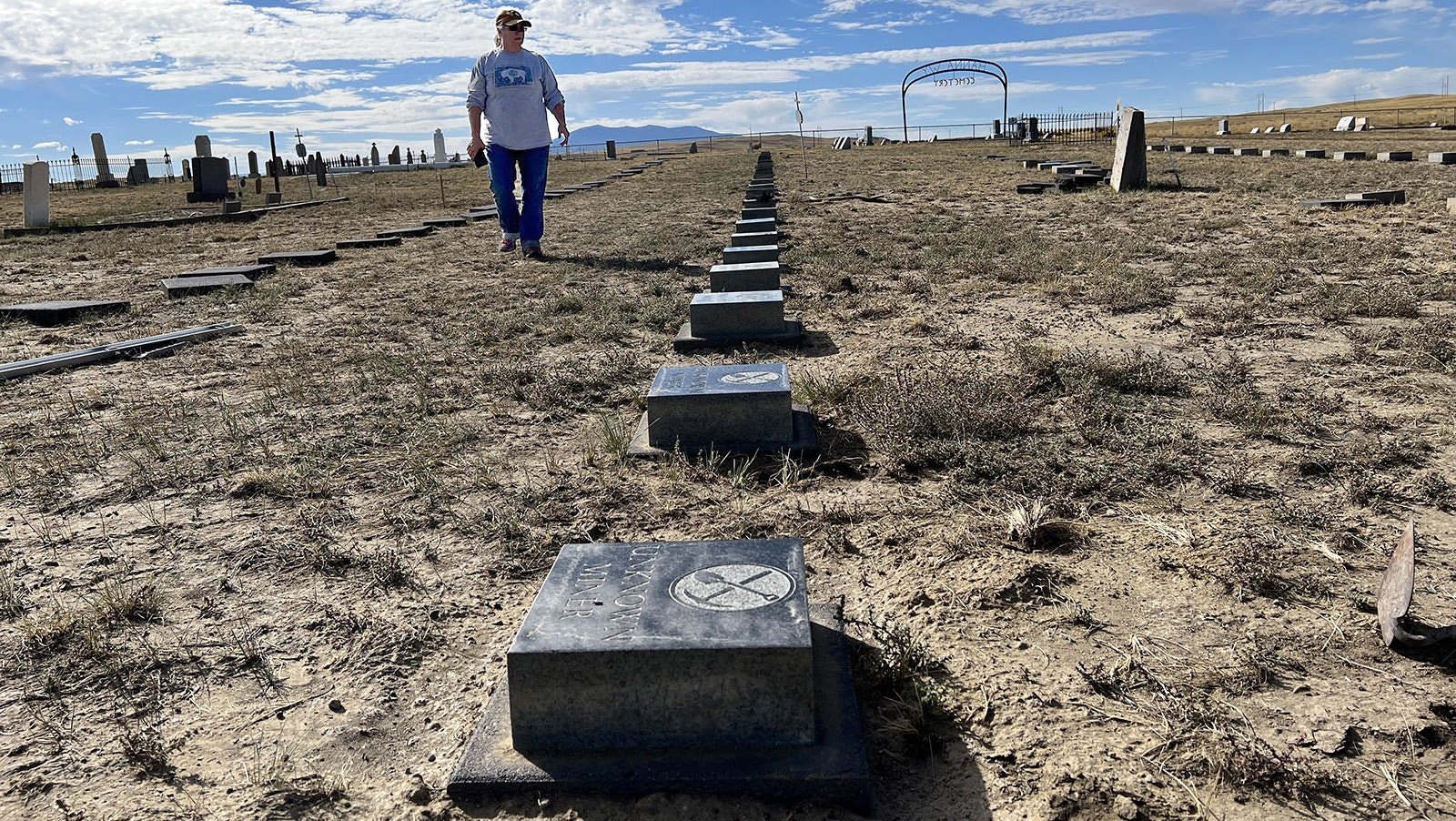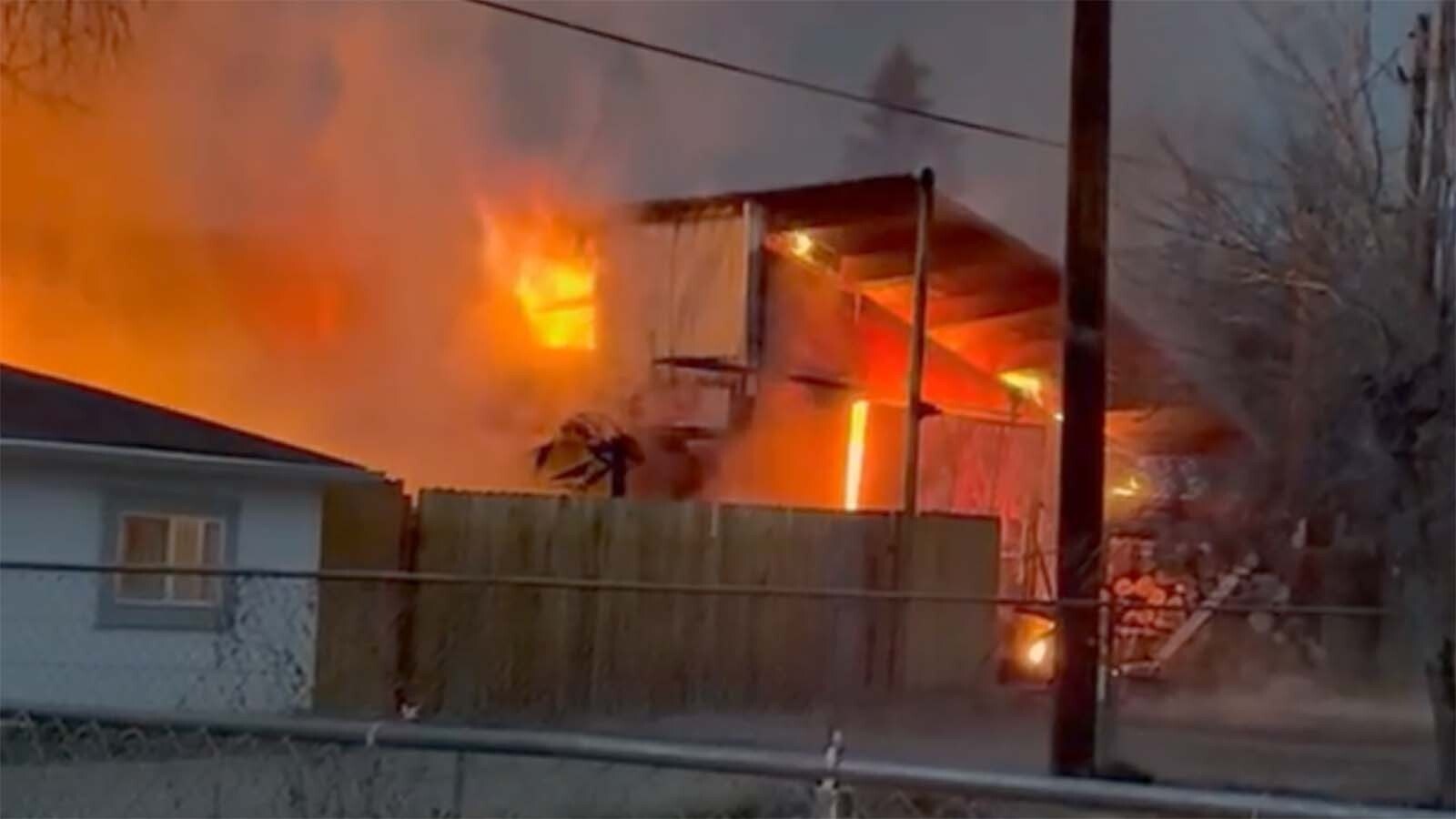Viewed from a distance along an isolated stretch of U.S. Highway 30 southwest of Medicine Bow, the tiny down of Hanna doesn’t seem like much to look at.
But there’s much to see here, particularly through the eyes of history.
And memories.
Gene Buckendorf has lived here for most of his 79 years, many of them spent working in the coal strip mines that used to surround Hanna.
Then, Hanna was a big, bustling town, at least by Wyoming standards.
“It was awesome” he said Tuesday while standing in the Hanna Cemetery, set on a hill a little west of town. “There were about 6,500 people in Hanna.”
“It’s just heartbreaking to see all of the properties that have gone to pot,” he added. “When the mines started closing down, people just started picking up and leaving.”
The mines began shutting down in the late 1980s. In 2012, the last shipment of coal left Hanna. It’s now a bedroom community.
The roadside sign on the main route into town lists its population at 683.
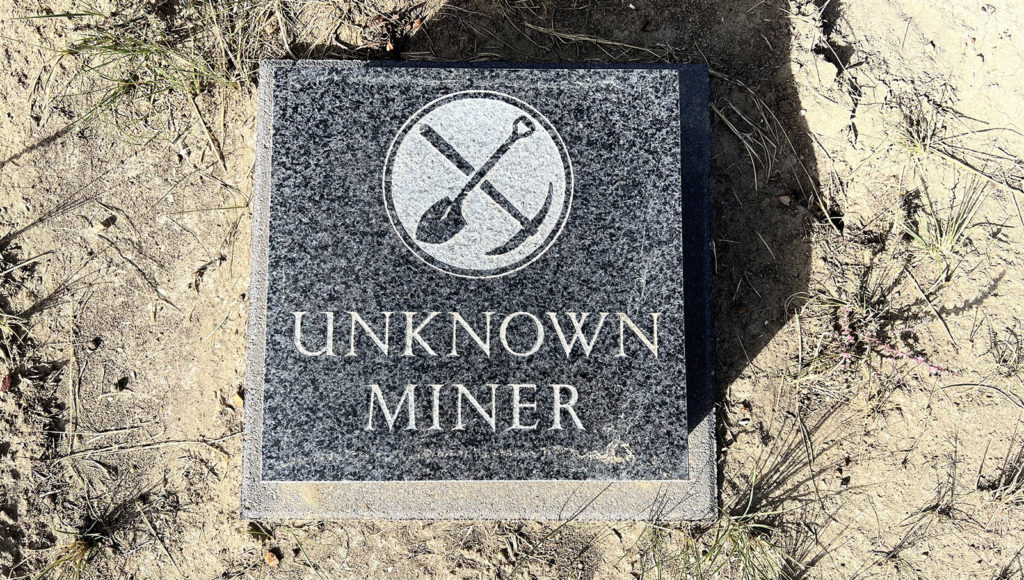
Ties To Home, History
Buckendorf and two other locals, Pam Paulson and Rudy Borrego, were joined by Bob Leathers of Casper. He grew up in Hanna and also worked in the coal strip mines while he was in college.
They were there to continue improvements on the unmarked graves of coal miners who perished in underground mine explosions in 1903 and 1908.
Buckendorf said he’s grateful that during the period when he, Borrego and Leathers were coal miners, the work was done on the surface.
“The only time I’m going underground is when I die,” he said.
Paulson said her parents moved their family to Hanna in 1960. She grew up here, but left when she was young, never dreaming that she’d come back.
But she returned with her own family in 2007 to help her aging mother. She’s now the president of the Hanna Basin Museum and Historical Society.
“This is my home,” she said. “Man, as a kid growing up here, we had all this room to roam. We’d roam all over these hills. It was great. It felt like being an antelope.”
Mining Towns Spring Up
In 1889, the Union Pacific coal mines in Carbon were starting to falter, Paulson said. Carbon, just south of Hanna, is now a ghost town.
So, Mark Hanna started prospecting new areas and found great deposits near what is now the townsite. He was on the board of directors for Union Pacific, which ran both the railroad and the coal mines in the area, Paulson said.
Once the town of Hanna was established, several underground coal mines opened up and grew, Leathers said. At its early peak in the late 19th and early 20th centuries, the town boasted roughly 3,000 people. They came from diverse places like Great Britain, Finland and Japan.
“Everybody got along, but it was very segregated,” he said. English speakers were generally hired as supervisors in the mines – “company men.”
The non-English speakers, including most of the Finns, worked the more menial jobs.
“They (the Finns and Japanese) were recruited because they didn’t speak English, so they wouldn’t join the miners’ union,” Leathers said. “That was done deliberately.”
Elmo, just east of Hanna, is now an incorporated part of the town, Leathers said. But during the mining heyday, it was a thriving town all its own, with a decadent edge.
“Elmo had all the bars,” he said. “It had all the booze, the women and the gambling.”
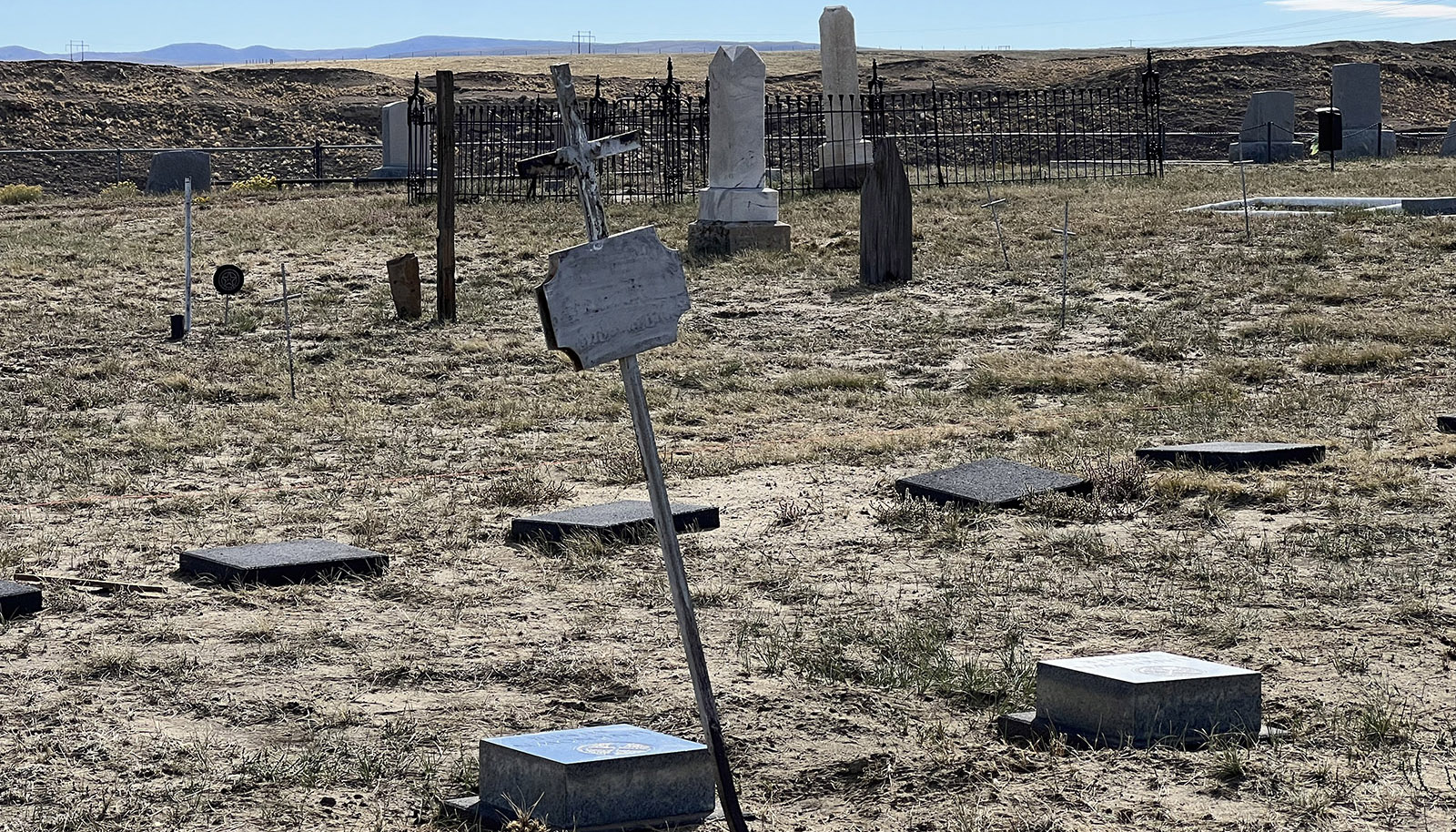



A Deadly Hazard Lurked
Methane gas buildup was a constant hazard in the underground mines. It could cause devastating explosions, and then suffocating fumes in an explosion’s wake.
On June 30, 1903, a massive explosion ripped through the Union Pacific No. 1 mine. The blast and subsequent fumes killed 169 men. The last body wasn’t recovered until Dec. 16, 1903, 172 days later.
The body of one miner, John Cox, was never found, Leathers said.
“He was stationed right where they think the point of ignition was,” he said.
At about 3 p.m. on March 28, 1908, another explosion in the No. 1 mine killed 18 men. Rescuers went into the mine, only to be caught in a second blast at about 10:30 p.m., which killed 41.
Atop a hill north of town, thought to be directly above what was the deepest part the mine, sits a simple memorial stone. It’s dedicated to 27 men whose bodies were never recovered from the 1908 disaster, as well as to Cox.
“There are still 28 men at the bottom of the mine,” Leathers said as he stood somberly near the memorial. “Two of them are my relatives.”
127 Unmarked Graves
In the immediate aftermath of the disasters of 1903 and 1908, it was difficult to identify many who had perished, particularly the Finns, Leathers said.
“Some of them had four or five different names associated with them,” he said. “If you were one of those miners, you’d have your Finnish name, a probate name from immigration, a mine record name and a newspaper name. And you’d probably also have a nickname given to you by the other men in the mine.”
In all, 110 miners from the 1903 disaster and 17 from 1908 were buried in unmarked graves in the Hanna Cemetery. For years, all those graves had was simple wooden crosses, Leathers said.
A Hanna local, Mary Ford, marked the graves with rebar crosses in 1940. In 2000, those were replaced by simple square marble markers. Each bears the image of a pick and shovel and the inscription “Unknown Miner.”
Leathers spent 22 years compiling all the information he could about the mines, their history and the identities of the men killed. He and others in the historical society were finally able to find all of their actual names.
“Collectively, we now know who they are,” Leathers said. “Individually, in terms of these graves, we’ll never be able to match them.”
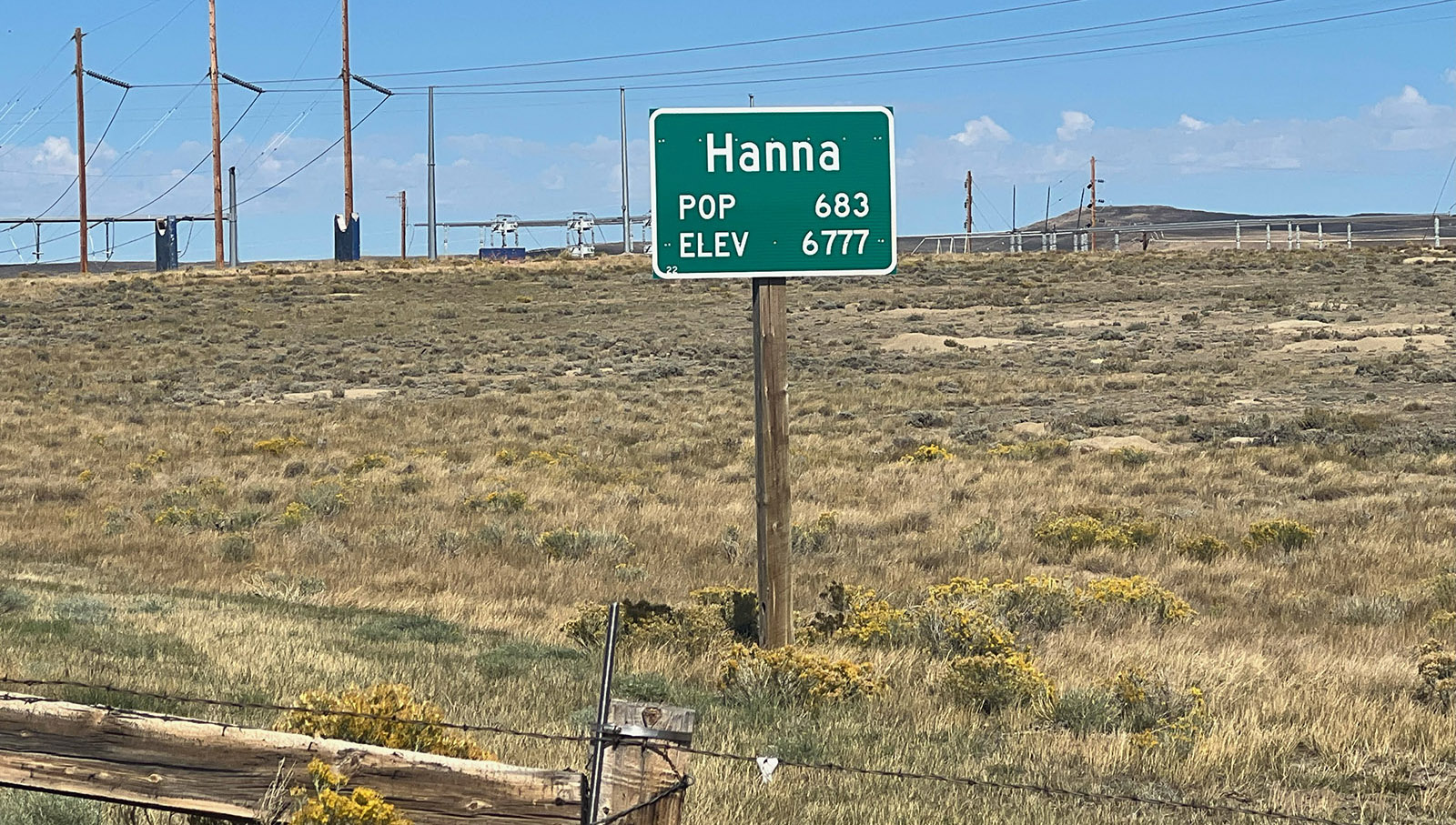

Restoration And Honor
In 2020, the lost miners of Hanna suffered another indignity. A brush fire burned the land surrounding the cemetery. And then winter, winds blew in ash and dust, burying many of the memorial markers.
Excavating them was painstaking, Paulson said.
“You just had to come in here with a shovel and probe around until you hit something solid,” she said.
With considerable effort, the marble markers were uncovered and cleaned.
On Tuesday, Paulson and the others worked at getting the memorial stones set onto new bases and aligned in straight rows.
A new memorial in the cemetery, bearing all the “unknown” miners’ names, is planned. There also will be a new stone memorial to replace the one on the hilltop dedicated to the men who were never recovered from the mines. It will bear their proper names. The projects are funded through a $9,000 “community ties” grant from Union Pacific, Paulson said.
“We’d like to have it (the cemetery memorial) ready by Memorial Day,” she said, although the dedication will probably have to wait until sometime in summer 2023.
“Typically, on Memorial Day, the weather is rain or snow,” she said. “Not good for a dedication ceremony.”
She added that people from Finland who have relatives who died in the disasters, have visited the cemetery over the years.
“They didn’t come for the past couple of years because of the pandemic,” Paulson said. “But I’d like to reach out to them, because it would be great if they could make it here for the memorial dedication ceremony.”
A Profound Effect
In all, 372 people perished over the decades in the coal mines of the Hanna Basin, Paulson said.
As retired coal miners themselves, Borrego and Buckendorf said they feel a connection to those who were lost.
“It’s important to preserve that history,” Borrego said.
Leathers said that in addition to the men lost at the bottom of the mine, he has other relatives who died in the explosions buried in the Hanna cemetery.
“That’s why I do this,” he said.
Their efforts haven’t gone unnoticed.
State Sen. Dave Kinskey, R-Sheridan, said in a recent Facebook post that he had visited the Hanna Cemetery and been profoundly moved by the unknown miners’ graves.
“Somebody evidently is working to preserve and restore the graves – God bless whoever that is,” he said.

